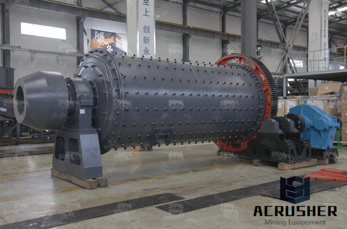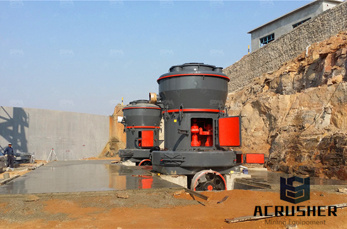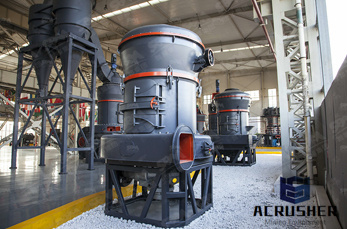Calcium Carbonate Processing Line YouTube
Jul 25, 2013· High Quality Calcium Carbonate CaCO3 Production in Vietnam DLC No. 1 Duration: 1:43. Innocom Công ty Công nghệ và Tư vấn doanh nghiệp 15,909 views
 WhatsApp)
WhatsApp)
Jul 25, 2013· High Quality Calcium Carbonate CaCO3 Production in Vietnam DLC No. 1 Duration: 1:43. Innocom Công ty Công nghệ và Tư vấn doanh nghiệp 15,909 views

Nov 21, 2017· How can the calcium carbonate (CaCO3) in a limestone reaction in the hydration process of cement be able to produce high early strength? The processing temperatures (1400 + deg C) preclude there being ant CaCO3 in the clinker and thus none in the ...

Calcium Carbonate or Calcium Citrate? Calcium carbonate is the more common of the two main types of calcium supplements . You should also eat something when you take it to help your body use it best.

This process ensures the Calcium Carbonate and water. Proper temperature and concentration has to be maintained during this process to ensure desired product. The resultant mixture of calcium carbonate and water is again passed through the wire mess to remove any impurity if still left. Drying:

Calcium Carbonate (CaCO 3) is one of the most widely used mineral fillers in the plastics industry, and its use in rigid packaging has increased significantly over the years. Once thought of simply as a resin extender, the addition of calcium carbonate in plastics has been shown to contribute to increased performance, improved processing, and improved sustainability of the finished part.

Jul 21, 2018· Homemade calcium soap making process has been encouraged for people seeking to gain other source of income to boost your financial capacity. Soap is used in every home and it will always be on a high demand. This article will unveil the secrets of calcium soap formation or making process.

Calcium carbonate, or CaCO3, comprises more than 4% of the earth''s crust and is found throughout the world. Its most common natural forms are chalk, limestone, and marble, produced by the sedimentation of the shells of small fossilized snails, shellfish, and coral over millions of years.

Aug 06, 2018· Calcium Carbonate Manufacturers use raw material resources for marble, chalk, limestone and dolomite in order to make calcium carbonate fillers and coating pigments for use in numerous market sectors.

Why not make your own calcium powder to use as well? There are many things that go into keeping your teeth and bones healthy, but calcium is one of the top performers to understand. Here are some facts that show why you should add calcium carbonate to your diet, what it is, and how to make your own, as well as how to supplement your health with it.

Calcium carbonate is one of the most abundant materials present in nature with the chemical formula CaCO3. Calcium carbonate also called limestone is an example of a metal carbonate used in the Solvay process.

Teeth are made of Calcium (a metal), Carbon and Oxygen, in the form of Calcium Carbonate. Flourine is chemically similar to Calcium, but it bonds to other atoms in a much stronger way.

Problem: Calcium Carbonate is a commonly used filler in plastics, a stearate coating is required to improve dispersiblity of this additive into the compounding process. Traditional coating processes can form undesirable agglomerates that increase the amount of additive required. Due to the high costs of stearates, companies looked for an effective, continuous coating ...

Jun 12, 2019· Calcium carbonate coating often refers to coating ground calcium carbonate powder with stearic acid to change the property of GCC powder. Stearic acid is water soluble, and will react with calcium carbonate particles to form a surface coating of calcium stearate. As a professional player in mineral processing areas, Daswell provides a high effective coating ...

Jun 24, 2019· Calcium carbonate can inhibit iron absorption when taken with meals. For women, whose needs of iron is higher than men''s, it is safer to take the calcium carbonate away from meals [54, 55]. When using calcium carbonate as an antacid, don''t take it for more than 2 weeks.

Jun 01, 2016· Other calcium carbonate applications include its use in building construction, plant and crop fertilizers, food additives, water and sewage treatment, ceramics, pharmaceuticals and cosmetics. The process The following paragraphs describe a carbonization process for precipitated calcium carbonate (PCC) production from limestone. Figure 1 ...

Aug 12, 2013· Calcium carbonate is the main component in egg shells. It is also a main component in the shells of marine animals and snails. 1 However, most of the calcium carbonate used industrially comes from mining. Even when used in pharmaceuticals or as a food additive, it is often produced from quarried marble. 2. The chemical formula of calcium ...

Precipitated Calcium Carbonate Production. Precipitated calcium carbonate is produced using the most economic process existing today. Limestone is converted into calcium oxide and carbon dioxide by means of calcination at temperatures in excess of 900°C. To ensure a high level of purity, the calcination process is carried out using natural gas.

It should be noted that calcium tends to be highly reactive with other materials and is, therefore, only ever found naturally as compounds. The arguably best known compound is calcium carbonate, also known as chalk. Calcium is an instrumental part of the human body, being the primary ingredient in bones and teeth.

Apr 24, 2017· Calcium is an element with metallic properties. It''s highly reactive, so it doesn''t occur in elemental form in nature. Limestone is a naturally occurring mineral high in calcium carbonate, or CaCO3. It''s possible to extract pure calcium from calcium carbonate through a multistage process requiring special equipment.

The resulting calcium sulfite collects at the base of the absorber and compressed air is blown into this residue. The calcium sulfite reacts with the air to form calcium sulfate (gypsum), used to make, for example, plaster board and cement. Very fine and pure calcium carbonate is used as filler in .

Dec 13, 2017· Calcium carbonate is used to prevent or to treat a calcium deficiency. There are many brands and forms of calcium carbonate available. Not all brands are listed on this leaflet. Calcium carbonate may also be used for purposes not listed in this medication guide.

May 11, 2019· Take calcium carbonate with food. This type of calcium, which is readily available, is best taken with food. It needs stomach acid to be absorbed properly, and the food activates your stomach acid. Other types of calcium, such as calcium citrate, does not need to be taken with food. This type of calcium is usually more expensive than calcium ...

From wikipedia article of calcium oxide. Calcium oxide is usually made by the thermal decomposition of materials, such as limestone or seashells, that contain calcium carbonate (ce{CaCO3}; mineral calcite) in a lime kiln.

Jul 31, 2019· The ground calcium carbonate processing plant, as a whole calcium carbonate production line, is consisted of a complete set of equipment, such as crusher, conveyor, feeding devices, limestone grinder, air classifier, silo, packing machines and so on. For some production line, calcium carbonate coating machine is also added to produce coated ...
 WhatsApp)
WhatsApp)